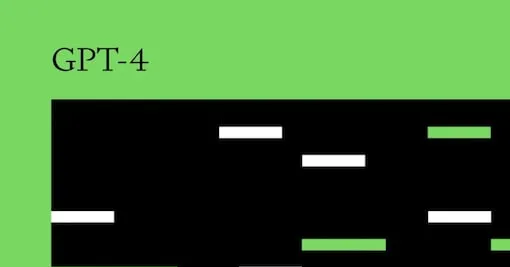Microsoft-backed OpenAI releases ChatGPT successor GPT-4
Following the successful launch of the popular artificial intelligence (AI) chatbot ChatGPT, Microsoft-backed OpenAI has started releasing a new powerful AI model, GPT-4. Also known as ChatGPT’s successor, GPT-4, a human-like technology, is more creative and collaborative.
GPT-4 can create, modify and iterate with users on creative and technical writing tasks such as composing songs, writing scripts or learning the user’s writing style.
Good news, we’ve increased our turn limits to 15/150. Also confirming that the next-gen model Bing uses in Prometheus is indeed OpenAI’s GPT-4 which they just announced today. Congrats to the @OpenAI team. https://t.co/WTVlVCVOyw pic.twitter.com/VA4Z1SDiEG— Jordi Ribas (@JordiRib1) March 14, 2023
“We’ve created GPT-4, the latest milestone in OpenAI’s efforts to scale deep learning. GPT-4 is a large multimodal model (accepts image and text input, sends text) that has human-level performance in many real-world scenarios, but it has human-level performance in various professional and academic benchmarks,” OpenAI said. blog post.
“We’ve spent 6 months repeatedly targeting the GPT-4 using the lessons learned from the adversarial testing program and ChatGPT, resulting in best-ever results in trueness, maneuverability and refusal to go outside the guardrails,” the company said.
The company is releasing GPT-4’s text input feature via ChatGPT and an API. In casual conversation, the difference between GPT-3.5 and GPT-4 can be subtle, OpenAI said.
The difference emerges when the complexity of the task reaches a sufficient threshold – GPT-4 is more reliable, more creative and can handle much more nuanced instructions than GPT-3.5.
OpenAI’s latest technology in some cases represented a huge improvement over the previous version, known as GPT-3.5, it said.
In a simulation of the bar exam required of U.S. law school graduates before practicing law, the new model scored in the top 10 or so among test takers, while the older model ranked in the bottom 10 percent or so, OpenAI said.
While the two versions may appear similar in casual conversation, “the difference emerges when the task complexity reaches a sufficient threshold,” OpenAI said, noting that “GPT-4 is more reliable, more creative, and can handle much more nuanced instructions.” .”
Read all the Latest Tech News here.




